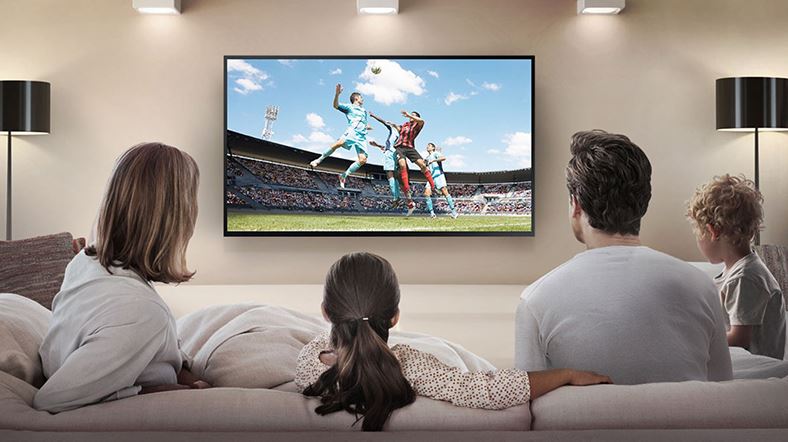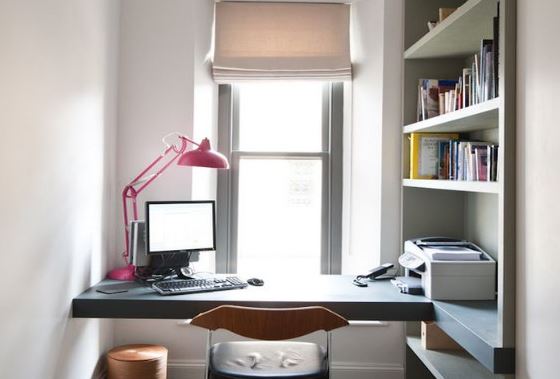It is time for you to buy a TV and you are lost in the variety of TVs available in the different stores. You are wondering which TV size you should opt for.
This article aims to help you to choose by explaining the important parameters to take into account when choosing the best TV size. Those parameters are the resolution of the TV, the distance from where you will watch, and the viewing angle.
Take note that this guide can be applied to your bedroom, living room, kitchen, or any other place in your lovely home.

How to choose the best TV size for your room?
1. Why you should pay attention to the size?
Watching a small TV is quite annoying as your eyes will not be good enough to distinguish all the details. In addition, this can also whack up your eyes…. A super large TV does you more harm than good if your room is too small to accommodate it and will cause you eye strain.
Another parameter to mention is the price. Indeed, the larger the TV is, the more you will pay.
2. Viewing distance is the key
When choosing the best TV for your room, you must pay attention to how far you are going to be sitting from the TV. It is the most important parameter to consider. Grab your measuring tape, and measure approximately the distance between the TV and the place you usually watch from. This is called the viewing distance.
There is a simple mathematical formula which provides a great idea about the viewing distance:
Viewing distance / 2 = recommended TV size
Let’s consider a concrete example. You will sit 7 feet away from your TV, which is 84 inches. 84 / 2 = 42 inches. You should hence go for a 42 inches size TV.
However, note that it is just a starting point. It all boils down to personal preference. One might enjoy watching TV from far away while you will personally prefer watching it from a close position.
Check Also: TV Stand Buying Guide: 5 Things to Remember Before Buying
3. TV resolution matters
Technology is developing at a very high pace. In the early 21st century, the old Cathode-Ray Tube (CRT) barely proposed 480 pixels screen (Standard-Definition Television), measured vertically. At that time, the first High Definition TV, so called HDTV was commercialized and the HD TV became widely popular.
Those TVs got 720 pixels vertically, they propose a better picture quality. A few years later, the Full HD TV appeared and replaced the HD TV. A Full HD TV is also known as 1080p TV (1080 pixels).
Recently (2010 decade), Ultra HD television also known as 4k TV was released, proposing 2160 pixels height! Always innovating, the television producers created 8k TVs with 4320 pixels height, blowing your mind by the quality of the screen.
Remind that: 720p = HDTV, 1080p = Full HD TV and 4k = Ultra HD TV
What is the ideal screen size according to the TV resolution? To a certain point, the size of the TV you opt for will depend on its resolution. Manufacturers have hugely reduced their production of 1080p TVs as the global market shifts towards 4K TVs. Furthermore, these days 720p resolutions are mostly reserved for smaller screens, with sizes up to 32 inches. Also, note that given a TV size, high resolution TVs are more expensive than the lower resolution ones.
The better the quality of the screen is, the closer you can sit. In contrast, the lower the quality is, the further you will have to sit to enjoy watching it. Basically, you cannot watch a 720 size TV from the same distance as would be watching a 4k size TV. The reason is that in order to avoid distinguishing the pixels representing the image you will have to step back enough.
The chart above provides you with TV size according to the screen resolution and the viewing distance. Let’s analyze it for each resolution.
1. 720p HD TVs
720p is the lowest quality we can find now in the market, used for small screen sizes. When mentioning High-Definition TVs, there are actually two different resolutions. The first one is 1280 pixels for the width and 720 pixels for the height (1280 x 720). The second one is 1366 x 768 which renders the image with a better quality. A 720p TV is in fact the latter.
The formula for a 720p resolution TV becomes now:
Viewing distance / 2.5 = recommended 720p TV size
For example, the distance between the TV stand and the sofa is 5 feet, which is 60 inches. In this case, the 720p TV size should be around 24” (60 / 2.5).
2. 1080p Full HD TVs
Full HD TVs provide nice image quality even though they are more and more neglected for 4k TVs. 1080p is still a nice technology for TVs up to 45”.
The formula remains the one proposed earlier. Viewing distance / 2 = recommended Full HD TV size
3. 4k TVs
The standard for TV is now 4K. Ultra-High-Definition technology offers a beautiful image letting you experience theater at home! 4K refers to one of the two resolutions: 3840 x 2160 pixels or 4096 x 2160 pixels. It’s 4 times more pixels than Full HD!
4K size TVs allow users to watch TV from a closer position than the other resolutions. Here is the indicative simple formula: viewing distance / 1.5 = recommended 4K TV size.
For instance, to watch 4K resolution TV from 10 feet (120 inches), an 80” TV size will be perfect!
4. Bonus: Viewing angle
Do not forget the viewing angle when choosing a TV. If your TV is going to be straight-on, then it does not matter. However, if you have seats off to the side then you should go for a bigger TV size, especially an OLED TV.
OLED TV offers a much wider viewing angle allowing more people to watch.
You can also check How to Set Up the Home Entertainment System in our blog.
Check Also: 11 Best Outdoor TV Antenna for Rural Areas
Frequently Asked Questions (FAQs)
- Which TV size is suitable for the bedroom?
You can choose your TV, Depending upon your room size, a maximum, of 50-inch TV is enough for a bedroom or kitchen. And you can choose the TV by calculating the ideal distance that you have to sit and watch.
2. What are the different sizes of TVs available in the market?
Nowadays, TVs come with different sizes in the market, the common sizes are 32″, 43″, 55″ and 65″. And for larger living rooms, you can choose 75″, 85″, and 98″ inch TV according to your need.
3. Does size is important to consider while buying a TV?
Size is not a matter to consider when buying a TV. Sometimes, a larger TV is not suitable for a small living room. The only thing is to choose the TV size according to your living area.
4. How high should I mount TV from the Floor?
First of all, you have to do some research about the sitting position and eyesight towards the screen. Mark your eyesight towards the middle of the screen. The standard height for hanging the TV above from the floor is 42 inches if the viewer is seated at 15-20 inches above the floor.
Conclusion
To conclude, the best size TV mainly depends on 3 parameters: the viewing distance, the resolution you wish, and the viewing angle. Combine those 3 data and you will get the perfect TV size! Happy shopping!
Hope this article was helpful. Stay with our blog for more related articles.



